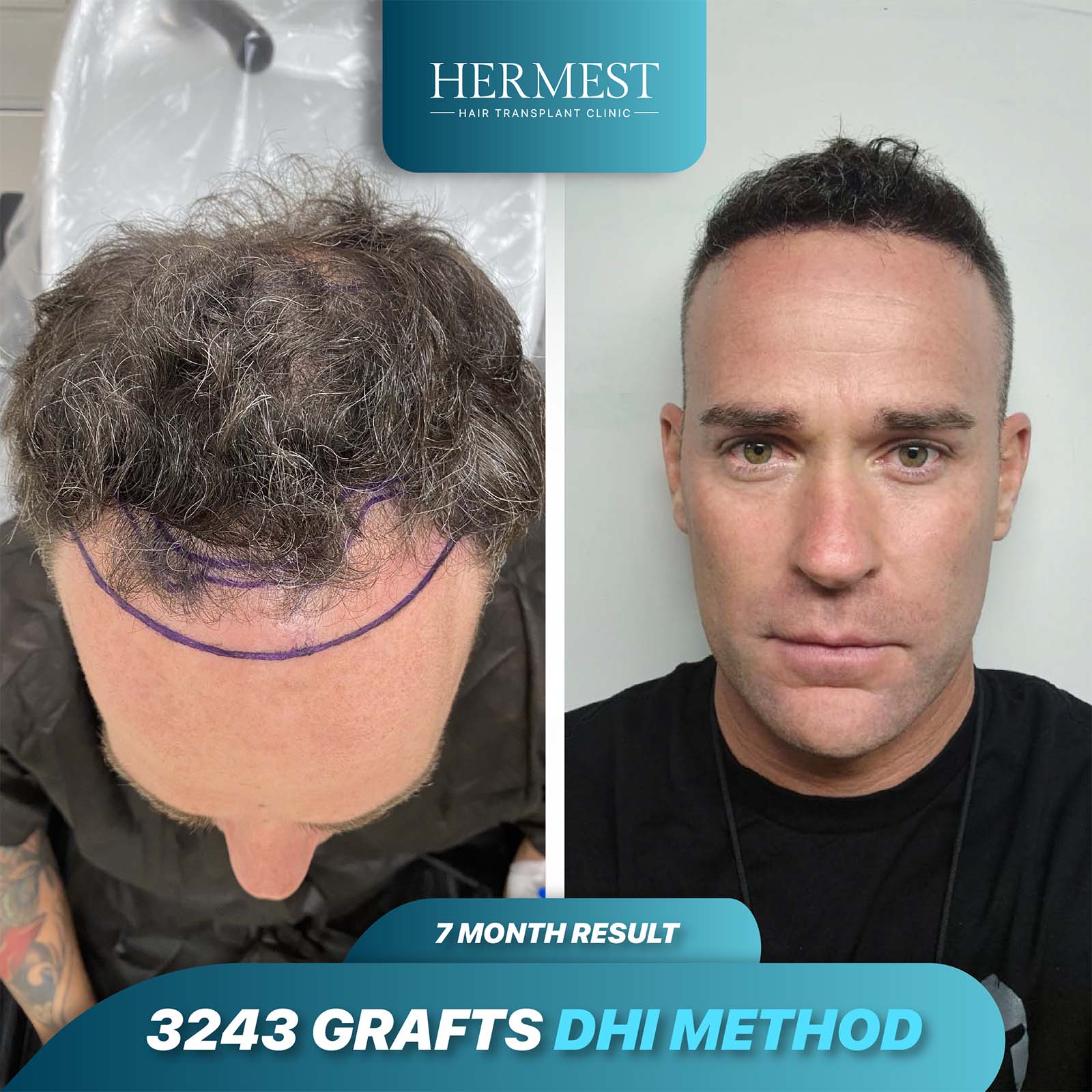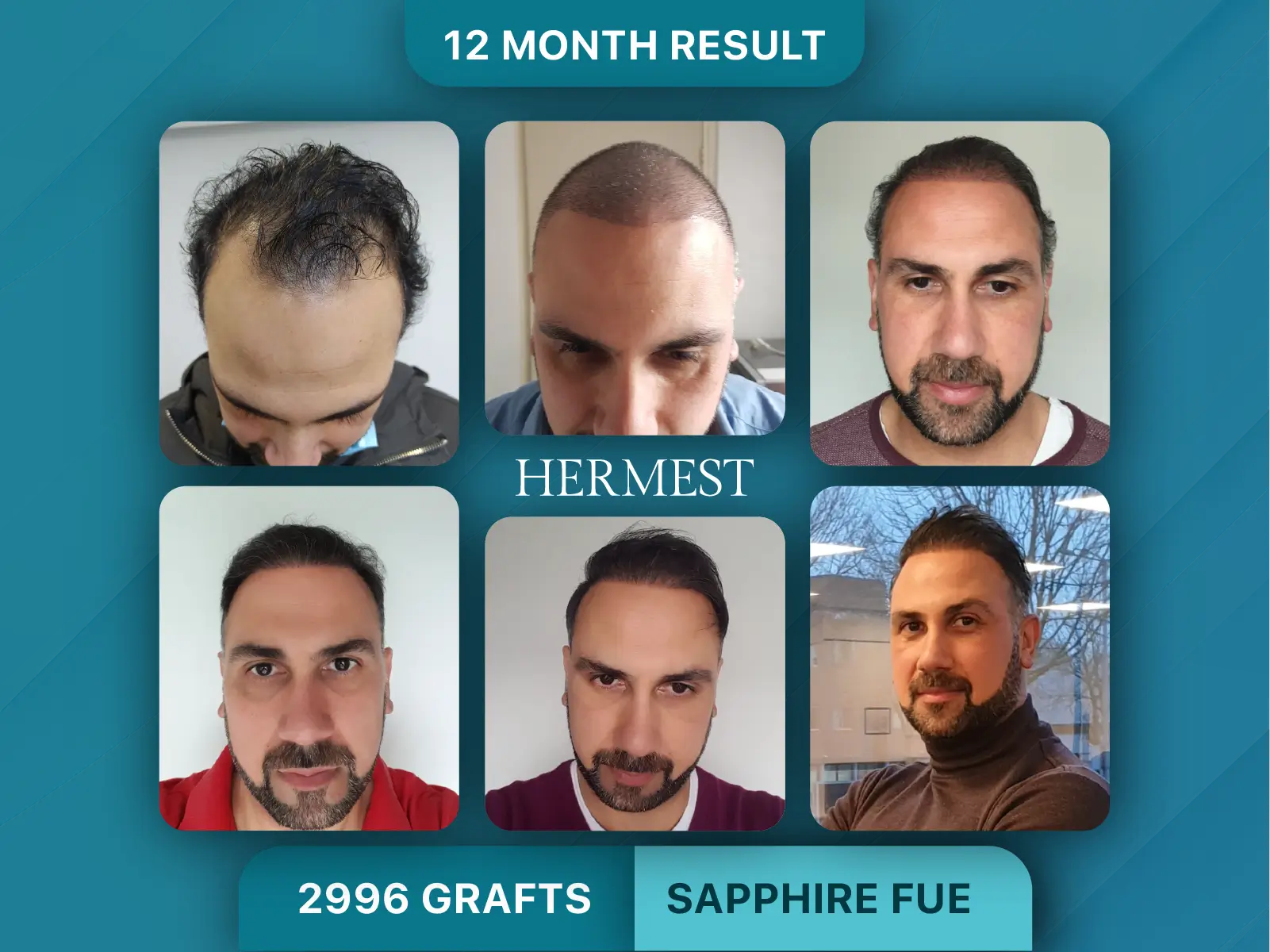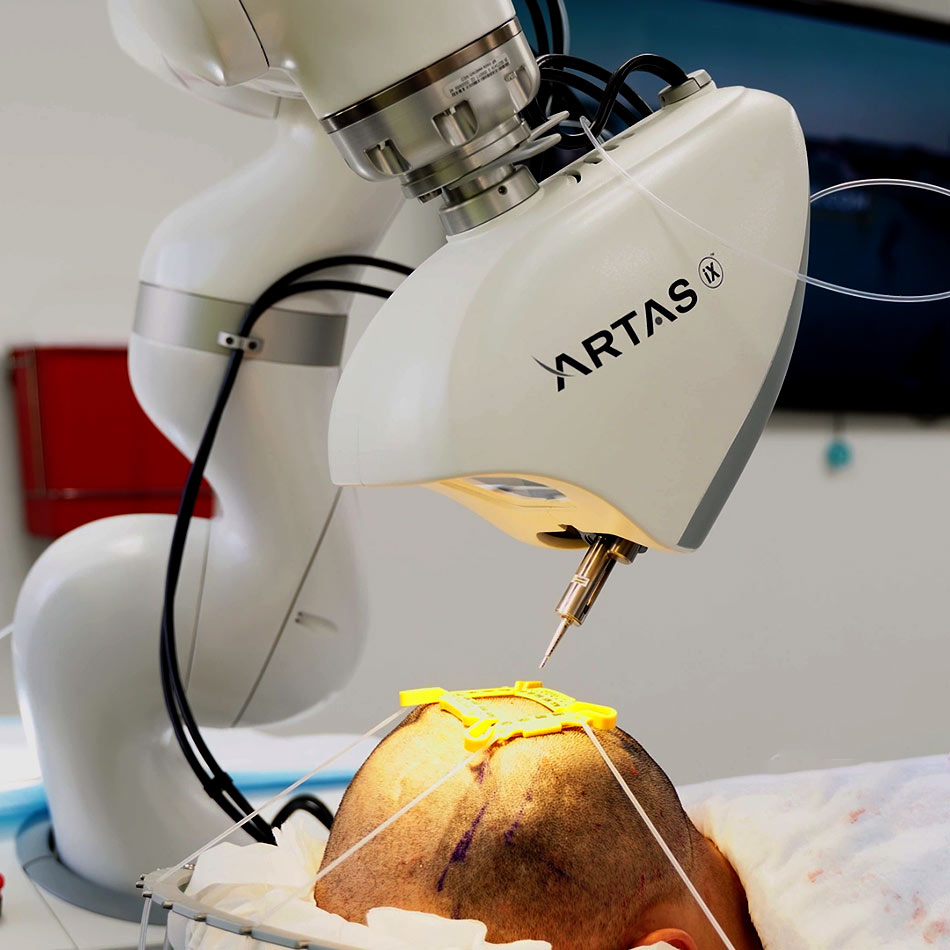If you’ve spent even an hour researching hair transplants, you’ve probably ended up more confused than when you started. FUE, DHI, Sapphire, FUT, Robotic… every clinic claims theirs is the “latest” or “most advanced”. But what do all these really mean? Are they different surgeries, or just different names for the same thing?
The truth is, there are only two core ways to harvest hair: FUT and FUE. Everything else (DHI, Sapphire, Robotic, etc.) are refinements of those methods. Think of them as different tools or “tech upgrades” used to make the same process more precise, faster, or less invasive.
According to the International Society of Hair Restoration Surgery (ISHRS, 2024), choosing the right technique isn’t about the latest buzzword. It’s about your pattern of hair loss, your donor area, your lifestyle, and most importantly, your surgeon’s experience.
Istanbeautiful team insight:
“People love asking, ‘Which technique is best?’ The better question is, ‘Which hands are holding it?’”
In this guide, we’ll break down the five most popular hair transplant techniques; FUT, FUE, DHI, Sapphire FUE, and Robotic FUE, showing how each works, who it’s best for, and what results you can realistically expect.
By the end, you’ll know exactly what those clinic ads are really talking about, and which method might actually fit you.
At a Glance: Top Hair Transplant Techniques
- FUT is best for large sessions and maximum graft yield.
- FUE offers freedom, no line scar, quick healing, natural blending.
- DHI adds control and artistry for refined zones like the hairline or temples.
- Sapphire FUE improves incision quality and healing comfort.
- Robotic FUE brings precision and consistency, but still needs a skilled human touch.
- Surgeon experience, planning, and donor management outweigh every tool on the market.
- Safe extraction = long-term satisfaction. Overharvesting never ends well.
- A good result ages gracefully. The goal isn’t density; it’s believability.
FUT (Strip): When You Need Big Numbers, Accept a Line Scar
Let’s start with the method that quietly built the foundation for everything that came after FUT, or Follicular Unit Transplantation.
You’ve probably heard people call it “strip surgery”. That’s exactly what it is: the surgeon removes a thin strip of skin (usually one to two centimeters wide) from the back of your head, then divides it under a microscope into tiny follicular units. These grafts are then implanted into the thinning zones.
According to the ISHRS, FUT remains one of the best choices when a patient needs a high number of grafts in a single session, often 3,000 – 4,500 grafts at once. It’s efficient, controlled, and preserves donor density because extraction happens in one area instead of scattered punches.
What It Feels Like
The donor area is stitched closed, leaving a fine linear scar that a skilled surgeon can hide beneath existing hair. Recovery takes a bit longer around two to three weeks before the tightness eases. Most people can return to work within 7 to 10 days if they keep the area covered.
Dr. Ahmet Murat (Hermest Hair Clinic):
“FUT isn’t outdated. It’s just underappreciated. For large Norwood cases, it’s still the safest way to get maximum grafts without thinning the donor zone.”
Who It’s For
- Men with advanced baldness who need full coverage in fewer sessions.
- People with thick, long hair who don’t mind a fine scar.
- Patients planning combined FUT + FUE strategies for lifetime graft management.
According to StatPearls (2024) and the Cleveland Clinic, FUT typically yields higher graft survival rates (up to 95%) because follicles spend less time outside the body. However, it’s less suited for those who prefer very short hairstyles or have tight scalp elasticity.
FUE: The Modern Workhorse (Manual or Motorized)
If FUT is the classic, FUE (Follicular Unit Extraction) is the everyday hero. It’s the method most people picture when they think of modern hair transplants, no scalpel, no stitches, just hundreds (sometimes thousands) of micro-punches collecting follicles one by one.

Here’s how it works: your surgeon uses a tiny circular punch, typically 0.8 mm to 1 mm wide — to extract each follicular unit directly from the donor zone. Those grafts are then implanted into small slits in the thinning area. The result? A cleaner donor site and no linear scar.
According to the ISHRS, FUE now accounts for over 85 % of all hair transplants worldwide. Its rise isn’t just hype, it’s about lifestyle. Patients want flexibility. They want to wear their hair short, go back to work fast, and not worry about stitches or visible lines.
Dr. Gökhan Bilgin (Smile Hair Clinic):
“FUE changed everything because it gave people freedom, short hair, faster recovery, and results that age naturally.”
What Makes FUE Work
The real skill lies in the angle and depth of extraction. Go too deep, and you risk damaging the follicle. Too shallow, and you leave part of it behind. According to StatPearls (2024), experienced surgeons maintain 90–95 % graft survival, while beginners often lose up to 20 % from poor handling.
FUE can be done manually or with motorized punches.
- Manual FUE offers precision and minimal trauma, perfect for small areas like temples or eyebrows.
- Motorized FUE speeds up large sessions (2,000–3,500 grafts) but requires excellent control to prevent overharvesting.
Pros
- No stitches or linear scar.
- Faster recovery, most redness fades within a week.
- Ideal for patients who like short hairstyles.
- Can harvest from beard or body hair if scalp donor is limited.
Cons
- Time-intensive for large cases.
- Slightly higher graft-transection risk if done too fast.
- Donor area can thin if not mapped carefully.
According to Cleveland Clinic (2024), most patients return to normal activity within 3–5 days, and hair begins visible regrowth after 3 months, with full density around 12 months.
DHI (Implanter Pens): Precision Placement for Hairlines & Part Lines
If FUE is the main road, DHI (Direct Hair Implantation) is the scenic shortcut, precise, delicate, and designed for detail work. But let’s clear something up first: DHI isn’t a completely different technique. It’s a way of performing FUE.

According to the ISHRS, DHI simply modifies the implantation step. The follicles are still extracted one by one (just like in FUE), but instead of creating recipient channels first, the surgeon uses a Choi implanter pen to implant and angle each graft in one motion.
Dr. Güncel Öztürk (HairNeva Clinic):
“DHI isn’t about the pen, it’s about control. You place each follicle exactly where it needs to be, with the right angle and depth. That’s what makes a natural hairline.”
What It Means for Patients
Because grafts are kept outside the body for a shorter time, DHI can increase survival rates by up to 10–15 %, according to a 2023 PubMed clinical study. The technique also allows denser packing in small zones, perfect for hairline refinement, temple fills, or female pattern thinning where precision matters more than volume.

But there’s a trade-off. DHI is slower. One session rarely exceeds 2,000–2,500 grafts, so it’s not ideal for patients needing full coverage. It also costs more because it requires more staff and real-time implantation instead of batch processing.
Best Candidates

- Men or women with early-stage thinning (Norwood 2–3 or Ludwig I–II).
- Patients focused on hairline or temple correction, not full restoration.
- Anyone who values minimal trauma and shorter graft handling time.
Dr. Ahmet Murat (Hermest Hair Clinic):
“We use DHI like a finishing brush, not a roller. It’s for artistry, not heavy lifting.”
The Bottom Line
DHI shines in the right hands, it offers beautiful density and softer angles, but it’s not a miracle pen. It’s still microsurgery. The device doesn’t replace experience; it amplifies it.
According to StatPearls (2024) and Cleveland Clinic, long-term results from DHI and standard FUE are nearly identical when both are done correctly. The difference comes down to technique precision and surgeon focus, not the equipment brand.
Sapphire FUE: Channel Quality, Not New Biology
When clinics advertise Sapphire FUE, it sounds like a completely new invention. But it’s not a different method, it’s a refinement of FUE, built around one simple change: the tool used to open channels.

Instead of using traditional steel blades, surgeons use sapphire-tipped microblades made from synthetic sapphire crystal. These blades are sharper, thinner, and stay cooler during use — allowing cleaner cuts and denser graft placement.
According to the ISHRS, the difference is mostly mechanical, not biological. The hair follicles are still harvested with standard FUE punches. What changes is how the recipient channels, the little pockets that hold each graft, are created. Sharper sapphire blades cause less trauma to the scalp tissue, reducing redness and promoting quicker healing.
Dr. Gökhan Bilgin (Smile Hair Clinic):
“Sapphire isn’t magic; it’s a better scalpel. It lets us work more delicately, especially for high-density front zones.”
Why It’s Popular
- The incision shape allows denser packing, up to 45–55 grafts per cm² safely.
- Recovery can be faster, often with less post-op scabbing.
- Reduced inflammation helps preserve nearby native hair, useful for patients with partial thinning, not full baldness.
A 2023 PubMed analysis found that sapphire tools may slightly improve wound healing rates compared to conventional steel blades, especially in patients prone to sensitivity or scarring. But it doesn’t change the graft’s biology, survival rates still depend on surgeon skill, storage medium, and implantation time.
Best Candidates

- Patients wanting dense, natural hairlines or small-area work.
- Those concerned about redness, healing, or skin sensitivity.
- Anyone combining PRP or exosome therapy for recovery support.
Dr. Ahmet Murat (Hermest Hair Clinic):
“We use sapphire blades for artistry — they let us sculpt the scalp more precisely, but the outcome still depends on planning.”
The Real Difference
Think of it like switching from a regular paintbrush to a fine-tipped one. The art still depends on the painter, not the brush. Sapphire tools give surgeons finesse, but without experience, they’re just shiny instruments.
Robotic FUE (ARTAS) — Automation with Human Oversight
The idea of a robot performing your hair transplant sounds futuristic, and, in a way, it is. Robotic FUE (often called ARTAS) uses artificial intelligence–assisted imaging to automate the most repetitive part of surgery: graft extraction.

Here’s how it works.
A robotic arm scans your donor area using a 3D camera and identifies the healthiest follicles for harvesting. It then uses a precise punch to extract them, usually with remarkable speed and consistency. The surgeon supervises the process, adjusting angles, density, and donor zones as needed.
According to the ISHRS and Cleveland Clinic, robotic FUE offers high accuracy and reduced transection rates, especially in straight hair types. It helps avoid fatigue-related errors that can occur during long manual sessions.
Dr. Güncel Öztürk (HairNeva Clinic):
“The robot doesn’t replace the surgeon. It just keeps the surgeon’s hand steady for 3,000 grafts straight.”
Why Some Clinics Use It
- The machine’s sensors can maintain consistent punch depth and direction.
- Extraction speed improves efficiency for large cases.
- Automated graft mapping allows surgeons to plan density more evenly.
But here’s the catch: Robotic FUE still needs human judgment. The device only handles extraction, not implantation, artistry, or aesthetic design. Surgeons still create the hairline, open channels, and place grafts manually.
According to StatPearls (2024), the biggest advantage is standardization, every graft is cut the same way. The downside? Limited flexibility. Robots struggle with curly hair, scarred scalps, or very light/dark contrasts where the camera can’t detect follicles easily.
Ideal Candidates
- Men with straight, medium-thickness hair and clear donor zones.
- Patients who want high precision and minimal fatigue risk in large FUE sessions.
- Those who value tech-supported consistency but still trust human artistry for design.
Dr. Ahmet Murat (Hermest Hair Clinic):
“Technology helps, but judgment heals. Robots can extract grafts, but they don’t understand faces.”
What It Really Means
Robotic FUE is best seen as an assistant, not a replacement. It reduces variability in extraction but doesn’t affect implantation quality or final design. For many surgeons, it’s a valuable tool, like using
Which Technique Fits You? (Use-Case Map)
If you’ve made it this far, you’ve probably realized every technique sounds great on paper.
So how do you know which one actually fits you?

According to the ISHRS, the best technique isn’t about trends, it’s about matching your pattern, lifestyle, and donor capacity. The right choice balances long-term planning with the reality of your scalp today.
Let’s make this simple.
If you need the biggest coverage in one go → FUT
FUT still gives the highest graft yield per session. It’s ideal for men with advanced hair loss (Norwood 5 – 7) who want full coverage and don’t mind a thin linear scar hidden under longer hair.
Dr. Ahmet Murat (Hermest Hair Clinic):
“When you’re chasing 4,000 grafts or more, FUT lets us harvest safely without depleting the donor area.”
If you want short hair, fast recovery → FUE
FUE offers freedom. You can cut your hair short, heal in days, and avoid stitches. Perfect for those in early to mid-stage loss (Norwood 2 – 5). Works equally well for beard or body-hair blending.
Dr. Gökhan Bilgin (Smile Hair Clinic):
“FUE is the balance point, enough grafts for real change, minimal downtime for real life.”
If precision and design matter most → DHI
DHI shines for detail work—refining a hairline, temple, or part. It’s slower and costlier but unmatched in control. Great for women, younger men, or anyone with localized thinning.
If you’re after clean incisions and faster healing → Sapphire FUE
This option suits people with sensitive scalps or those combining treatments like PRP or mesotherapy. It’s essentially FUE with better blades, giving slightly less swelling and quicker recovery.
If you love tech and consistency → Robotic FUE (ARTAS)
Best for straight-haired patients with large donor areas who value precision and automation. But remember—the robot extracts; humans still design the hairline.
If you have limited donor supply → Combination Planning
Some best hair transplant clinics in Turkey (including Hermest, Smile and HairNeva) mix FUT and FUE over time. It preserves donor reserves and allows up to 7,000–8,000 lifetime grafts safely, according to ISHRS case series (2023).
Dr. Güncel Öztürk (HairNeva Clinic):
“The art is in sequencing, knowing when to harvest, when to rest, and when to rebuild.”
Cost of Each Hair Transplant Technique
The price of a hair transplant isn’t just about the technique, it’s about time, precision, and the hands doing the work. Still, each method carries its own range because of how it’s performed and how many people (and hours) it takes to do it right.
According to ISHRS Global Market Data (2024) and Cleveland Clinic cost analysis, here’s what patients typically pay:
- FUT (Strip Method): usually the most affordable option, averaging $1,500–$2,500 (USD) in Turkey. In the US or UK, expect $5,000–$9,000. Ideal for those needing many grafts in one session.
- FUE (Manual or Motorized): the modern standard, priced around $2,000–$3,500 in Istanbul, or $6,000–$10,000 abroad. Costs rise with graft count and surgeon experience.
- DHI (Implanter Pen Method): more labor-intensive, requiring larger medical teams. Prices range from $2,500–$4,000 in Turkey and $7,000–$12,000 internationally. Great for smaller, design-focused sessions.
- Sapphire FUE: a refined version of FUE, often $2,800–$4,200 in Turkey. It costs slightly more because sapphire blades are single-use and imported.
- Robotic FUE (ARTAS): the most expensive. Machines cost six figures, so clinics charge accordingly — $4 000–$6 500 in Turkey and up to $15 000 in North America or Western Europe.
What Affects the Final Price
- Graft count: every graft adds cost; most clinics quote per graft.
- Technique & staffing: DHI and Robotic FUE require more operators.
- Experience: top surgeons charge more and usually waste fewer grafts.
- Aftercare & PRP: some include PRP, plasma therapy, or medication packages.
According to ISHRS and Bernstein Medical data, Turkey remains the world’s most cost-efficient destination, offering quality equal to Western standards at roughly 60–70 % lower prices, mainly because of lower operational costs, not lower quality. Turkey also performs more than 500,000+ hair transplant procedures annually.
Risks & What Matters More Than the Tool
Every clinic talks about their “latest technique”. But ask any honest surgeon, and they’ll tell you: the method isn’t what saves your grafts, the execution does.
According to the ISHRS, the biggest risks in hair transplantation are overharvesting, poor graft handling, and vascular overload from overly dense placement. None of these come from the tool itself, they come from rushing, fatigue, or poor planning.
Graft Damage from Inexperience
FUE and DHI require precise angling. A 0.2 mm deviation can crush a follicle or sever its root. Once that happens, it’s gone forever. Studies in PubMed show graft transection rates range from 3% in skilled hands to 20% in untrained ones. That’s the difference between full density and patchy regrowth.
Dr. Gökhan Bilgin (Smile Hair Clinic):
“Technique doesn’t fail. Technique done too fast does.”
Donor Zone Exhaustion
This is where most regrets begin. Some clinics extract more than 15 grafts per cm², thinning the back permanently. The ISHRS Donor Safety Committee (2023) warns that exceeding 40% total donor harvest risks visible patching, something even future procedures can’t fix.
Dr. Ahmet Murat (Hermest Hair Clinic):
“You can’t buy back donor hair. It’s a one-time currency.”
Overpacking the Recipient Site
Patients often think “denser is better.” But beyond 60 grafts per cm², the scalp can’t breathe. The blood flow drops, and some follicles die, a complication known as necrosis. The Cleveland Clinic (2024) reports that most graft losses occur when clinics overfill small areas for dramatic short-term photos.
Unrealistic Expectations
Even perfect surgery can’t bring back teenage density. The StatPearls medical review (2024) notes that transplanted hairlines should be designed for future stability, not today’s vanity. Overly low or dense hairlines often look unnatural five years later as surrounding native hair continues to thin.
Dr. Güncel Öztürk (HairNeva Clinic):
“Our job isn’t to give you your old hairline, it’s to give you one that still looks real when you’re sixty.”
Hygiene & Handling
Every graft is living tissue. Improper storage, dehydration, or bacterial exposure can lower survival by 10–15%, according to ISHRS case studies. That’s why leading clinics use HypoThermosol® or saline solutions under 8°C, not open trays.
What Actually Matters Most
Forget the brand name. Focus on planning, donor safety, and surgeon oversight. Robots, sapphire blades, or implanter pens can’t compensate for poor medical ethics or assembly-line operations.
Important Questions & Answers
Which hair transplant technique is best?
There isn’t a single “best” method. According to the International Society of Hair Restoration Surgery, FUT is best for large graft counts, FUE for minimal scarring, DHI for precision zones, Sapphire FUE for cleaner incisions, and Robotic FUE for automation. The right one depends on your hair type, pattern, and goals.
Is DHI really better than FUE?
Not necessarily. DHI is a variation of FUE that uses implanter pens for direct placement. It helps in smaller, detailed areas but doesn’t grow faster or thicker. Outcomes rely on the surgeon’s technique, not the tool.
Is Sapphire FUE a new technology?
No, it’s an upgraded FUE tool. Sapphire blades allow sharper, smoother channels that heal faster. They may reduce inflammation slightly but don’t change follicle biology or survival rates.
Is Robotic FUE worth it?
It can be, especially for straight hair and large sessions. The ARTAS systems are considered to improve precision but still require human oversight for design and implantation.
Which method gives the most natural hairline?
Naturalness comes from angle, density, and spacing, not the machine. DHI and Sapphire FUE offer fine control for hairlines, but artistry and planning create the “born-with-it” look.
Can I combine techniques?
Yes. Many surgeons use FUT first, then FUE or DHI later to maximize lifetime graft yield. The ISHRS donor guidelines support combination planning when done years apart.
How long does recovery take?
- FUE/DHI/Sapphire: 5–7 days for redness to fade.
- FUT: about 10–14 days for sutures to heal.
You can usually return to work within a week.
Which technique hurts less?
All methods use local anesthesia. Most patients describe the sensation as mild pressure rather than pain. Post-op tenderness lasts 1–3 days.
Do different methods have different success rates?
When performed correctly, all major techniques show 90–95% graft survival. The real difference is how your body heals, and how carefully your surgeon works.
What’s the safest option for women?
Women usually benefit from DHI or FUE, since these methods avoid shaving and allow smaller, denser sessions. DHI is preferred for female pattern thinning along the part or crown.
References
- International Society of Hair Restoration Surgery (ISHRS). FUE Clinical Practice Guidelines. 2024.
- Cleveland Clinic. Hair Transplant: Procedure, Risks, and Recovery. 2024.
- StatPearls Publishing. Hair Transplantation. 2024.
- PubMed Central (PMC8611706). Hair Transplant Practice Guidelines and Safe Harvesting Thresholds. 2023.
- ISHRS. Surgical Treatments for Hair Loss: FUT vs FUE Explained. 2024.
- Bernstein Medical. Understanding Graft Numbers and Donor Safety.
- ISHRS Donor Safety Committee. Safe Extraction and Density Planning. 2023.